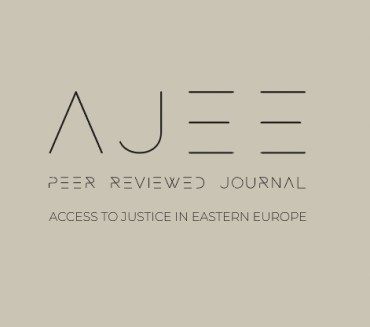Summary: 1. Introduction to ne bis in idem in Criminal Proceedings. – 2. The Convention for the Protection of Human Rights and Fundamental Freedoms: The First Step towards the Europeanisation of ne bis in idem in All Types of Proceedings. – 3. The Charter of Fundamental Rights of the European Union: A Step Forward or a ‘copy’ of the Convention? – 4. The Convention Implementing the Schengen Agreement: Recognition of ne bis in idem at the Inter-state Level. – 5. The European Convention on Extradition: Ne bis in idem in the Traditional Scheme on Extradition. – 6. Legislative Instruments in the Field of Mutual Recognition of Judicial Decisions in Criminal Proceedings: Ne bis in idem in the Modern Scheme of Co-operation in Criminal Matters. – 7. Conclusions.
Background: The principle ne bis in idem is a traditional principle relevant to criminal proceedings in European states. While in the past, crime had a primarily national dimension, these days, it has an international dimension as well. The Europeanisation of law also occurred in criminal law, including criminal proceedings. Thus, an understanding of ne bis in idem as a modern guarantee involving the international dimension is needed.
Methods: The basic sources used for the elaboration of the paper are scholarly sources (monographs, textbooks, studies, and scientific papers, etc.), legislative instruments (international agreements, etc.), and case-law (of the European Court of Human Rights and the Court of Justice of the European Union). The materials used here also include the available explanatory memorandums. The author uses traditional methods of legal scientific (jurisprudential) research – general scientific methods as well as special methods of legal science (jurisprudence). The general scientific methods used in the paper are predominantly logical methods, namely, the method of analysis, the method of synthesis, and the method of analogy, as well as the descriptive method. The descriptive method has been used to familiarise the reader with the current legal regulation of ne bis in idem. The method of analysis has been used as regards relevant provisions and case-law. The method of synthesis has also been used, as has the method of analogy. The special methods of legal science used here predominantly include methods belonging to a group of interpretative methods, namely, the teleological method, the systematic method, the historical method, and the comparative method. The teleological method has been used as regards the explanation of the purpose of legislative instruments. The systematic method has been used in the classification of the principle of ne bis in idem. The historical method has been used as regards the genesis and historical aspects of ne bis in idem. The comparative method has been used to examine the relationship between legislative instruments.
Results and Conclusions: The principle of ne bis in idem is one of the oldest norms in western civilisation. Since the Europeanisation of law also occurred in criminal law, including criminal proceedings, the principle of ne bis in idem became a part of international legal documents. The Convention for the Protection of Human Rights and Fundamental Freedoms, as amended by Protocol No. 7, introduced a new right – the ‘right not to be tried or punished twice’. In addition, the Charter of Fundamental Rights of the European Union, which is the first bill of rights developed explicitly for the EU, also introduced the principle of ne bis in idem as the ‘right not to be tried or punished twice in criminal proceedings for the same criminal offence’. However, its understanding in the Charter has no additional significance. In principle, it is the same. Despite the fact the primary purpose of the Convention implementing the Schengen Agreement is to facilitate the free movement of persons between member states of the EU by removing internal border controls, several measures have been introduced which focus on police and judicial co-operation, including the principle of ne bis in idem, in the provision entitled ‘Application of the ne bis in idem principle’. This provision is considered the most developed expression of an internationally applicable ne bis in idem. Ne bis in idem also occurs in extradition proceedings and surrender proceedings. Its operation under the European Convention on Extradition prevents the double prosecution of the same person for the same offence in different jurisdictions. As regards the new procedural system introduced by the Framework Decision 2002/584/JHA on the European arrest warrant, based on the surrender proceedings as a special kind of criminal proceedings, there is no absolute obligation to execute the European arrest warrant. The Framework Decision, in its core text, includes grounds for non-execution of the arrest warrant in the executing state – and one of them is the principle of ne bis in idem.
This publication contains some results of research that has previously appeared in the following of my publications, which were substantively updated:
L Klimek, European Arrest Warrant (Springer Cham 2015)
<https://doi.org/10.1007/978-3-319-07338-5>;
L Klimek, Mutual Recognition of Judicial Decisions in European Criminal Law (Springer Cham 2017) <https://doi.org/10.1007/978-3-319-44377-5>;
L Klimek, ‘Transnational application of the Ne bis idem principle in Europe’ (2011) 5(3) Notitiae ex Academia Bratislavensi Iurisprudentiae 12-33;
L Klimek, Judikatúra Súdneho dvora Európskej únie vo veciach trestných [transl.: Case-law of the Court of Justice of the European Union in Criminal Matters] (Wolters Kluwer 2018);
L Klimek, Judikatúra Súdneho dvora Európskej únie vo veciach zneužívania trhu a súvisiacich trestnoprávnych otázok [transl.: Case-law of the Court of Justice of the European Union in Matters of Market Abuse and Related Criminal Issues] (Wolters Kluwer 2020).

